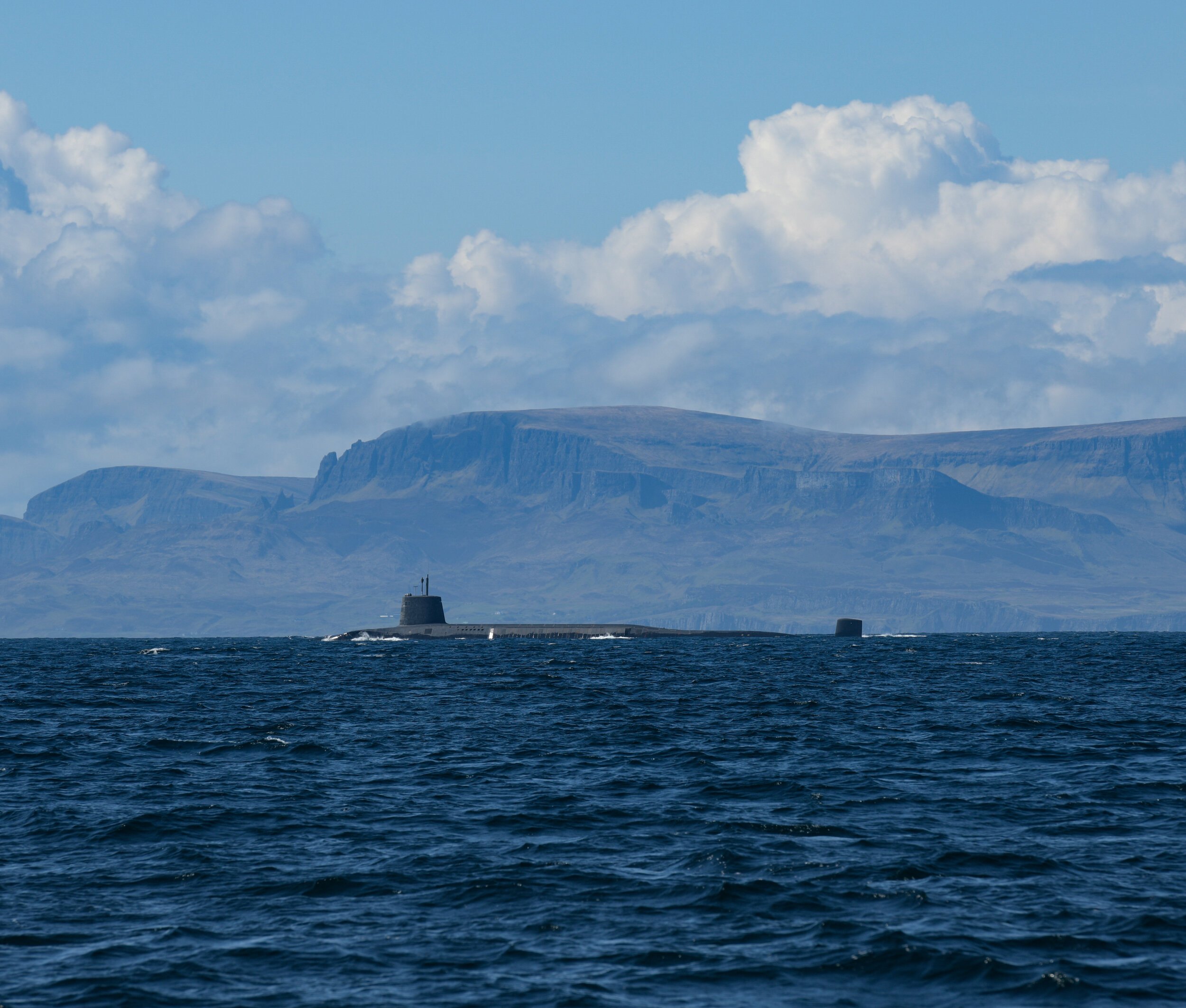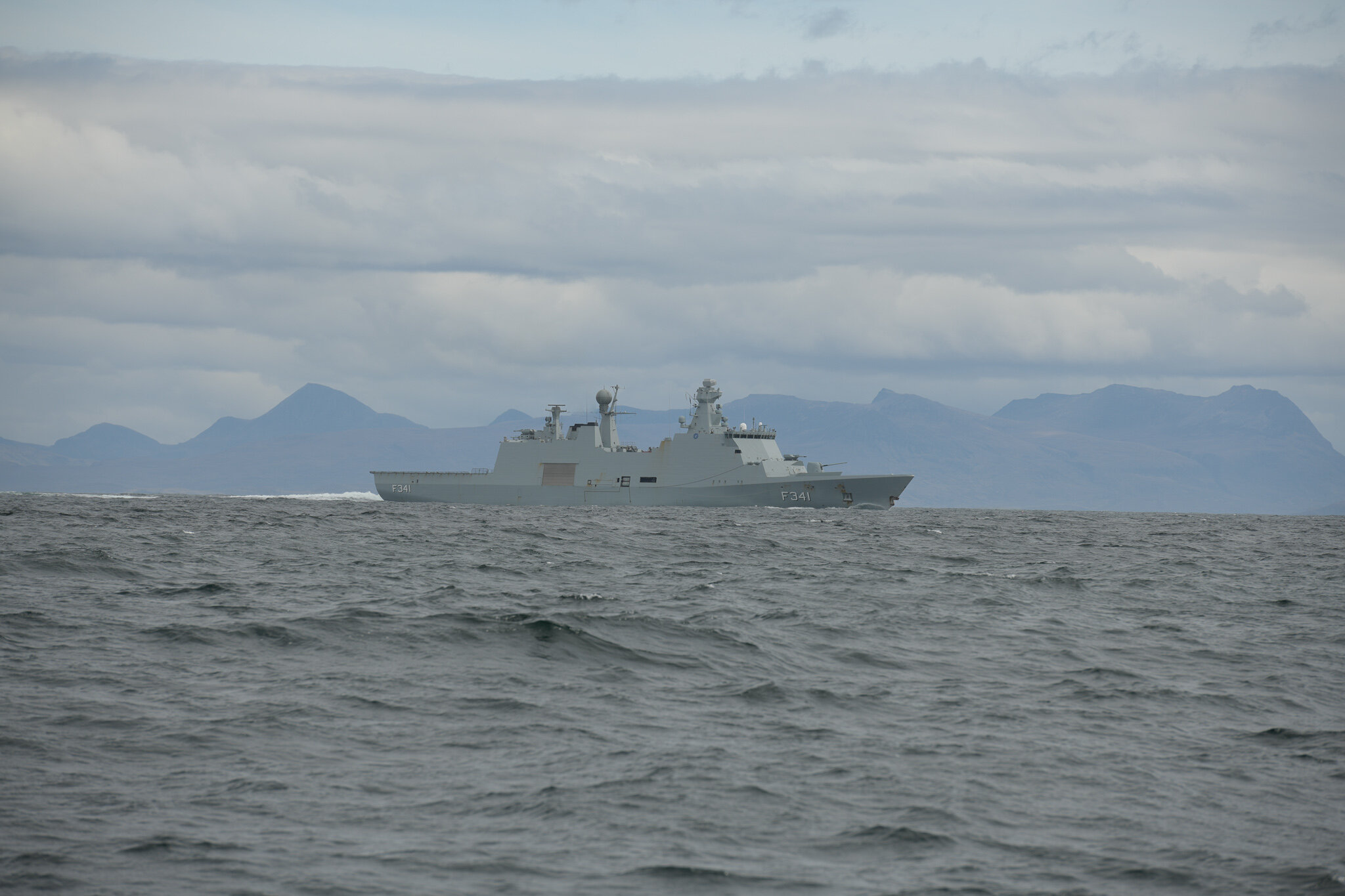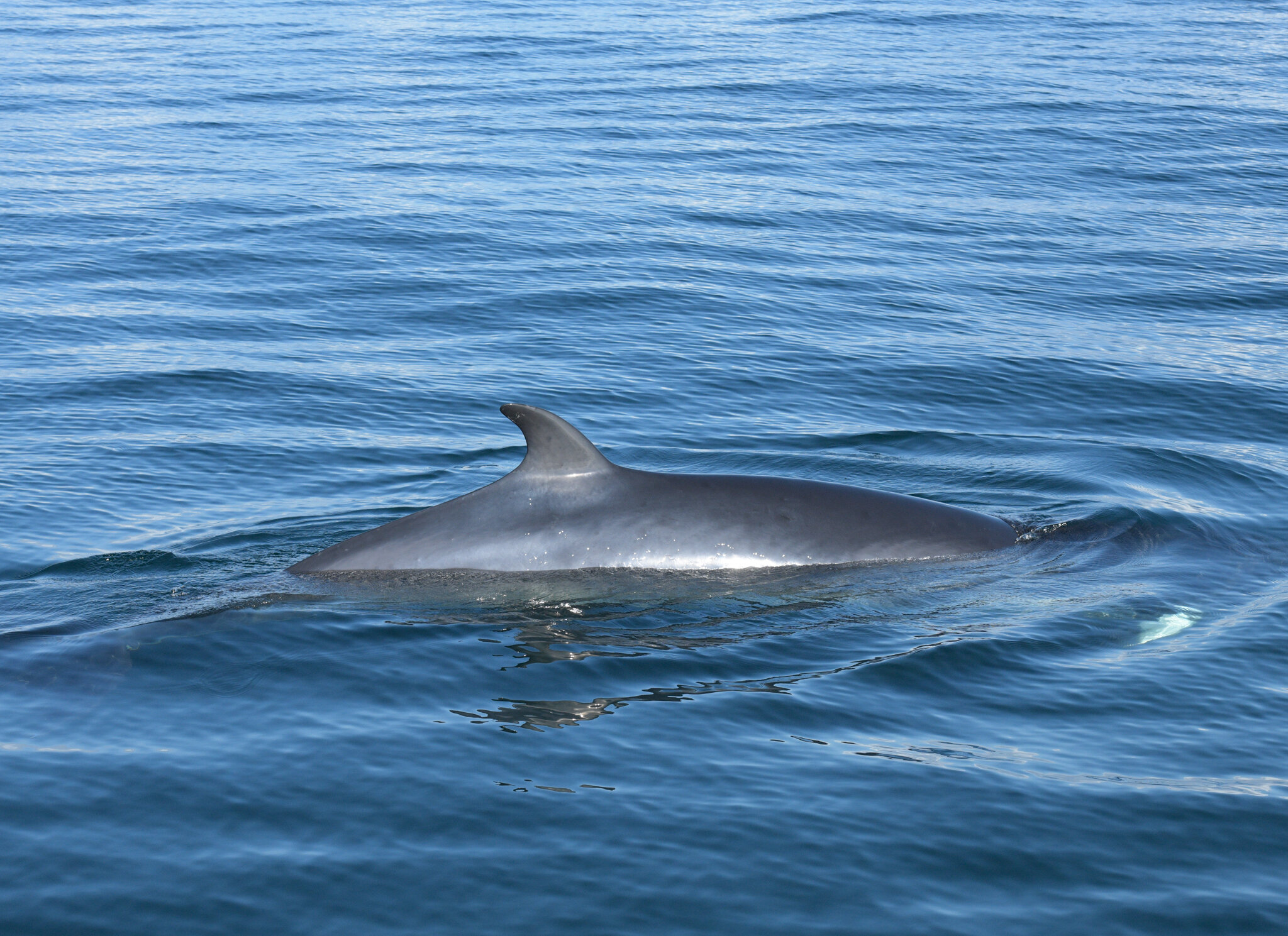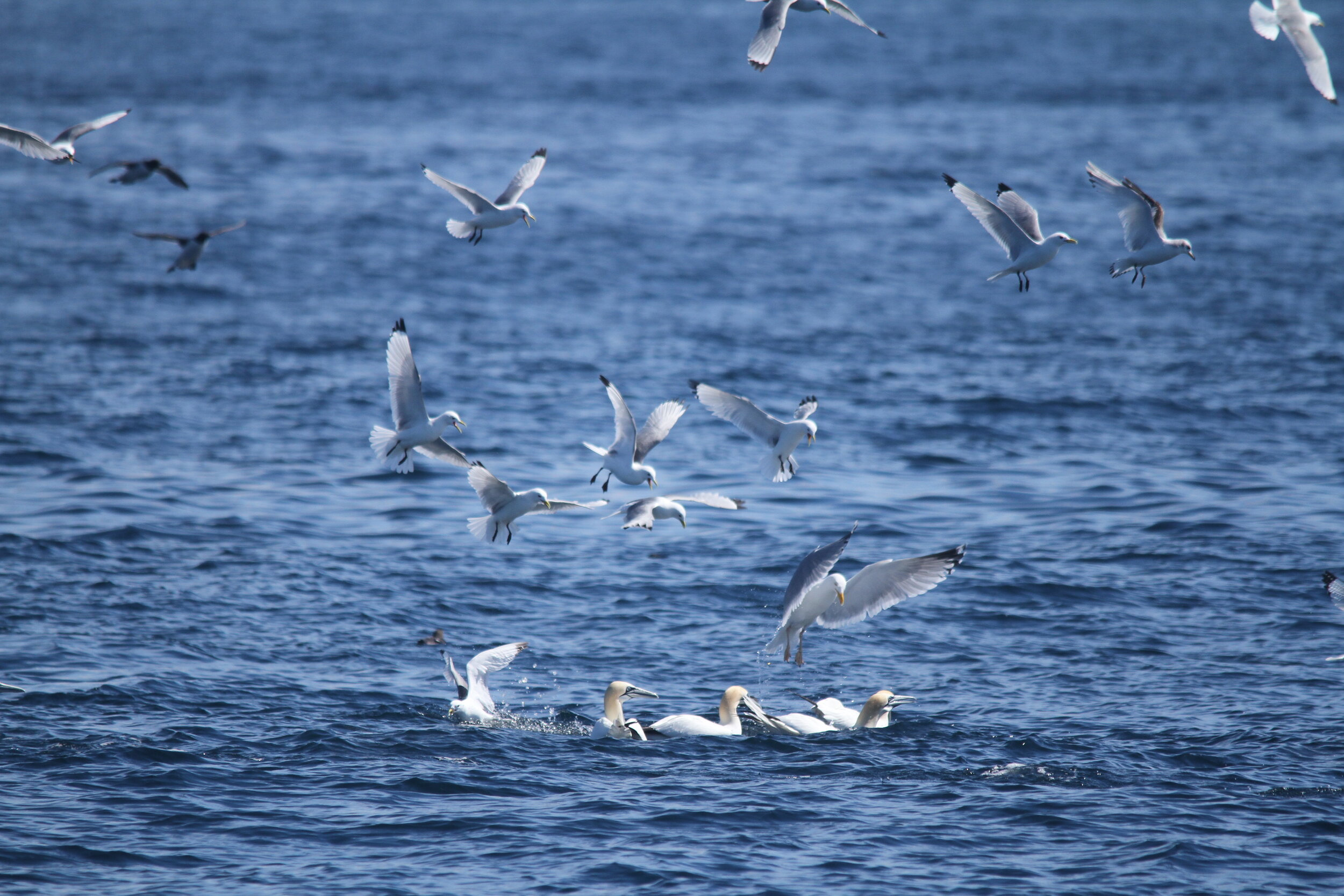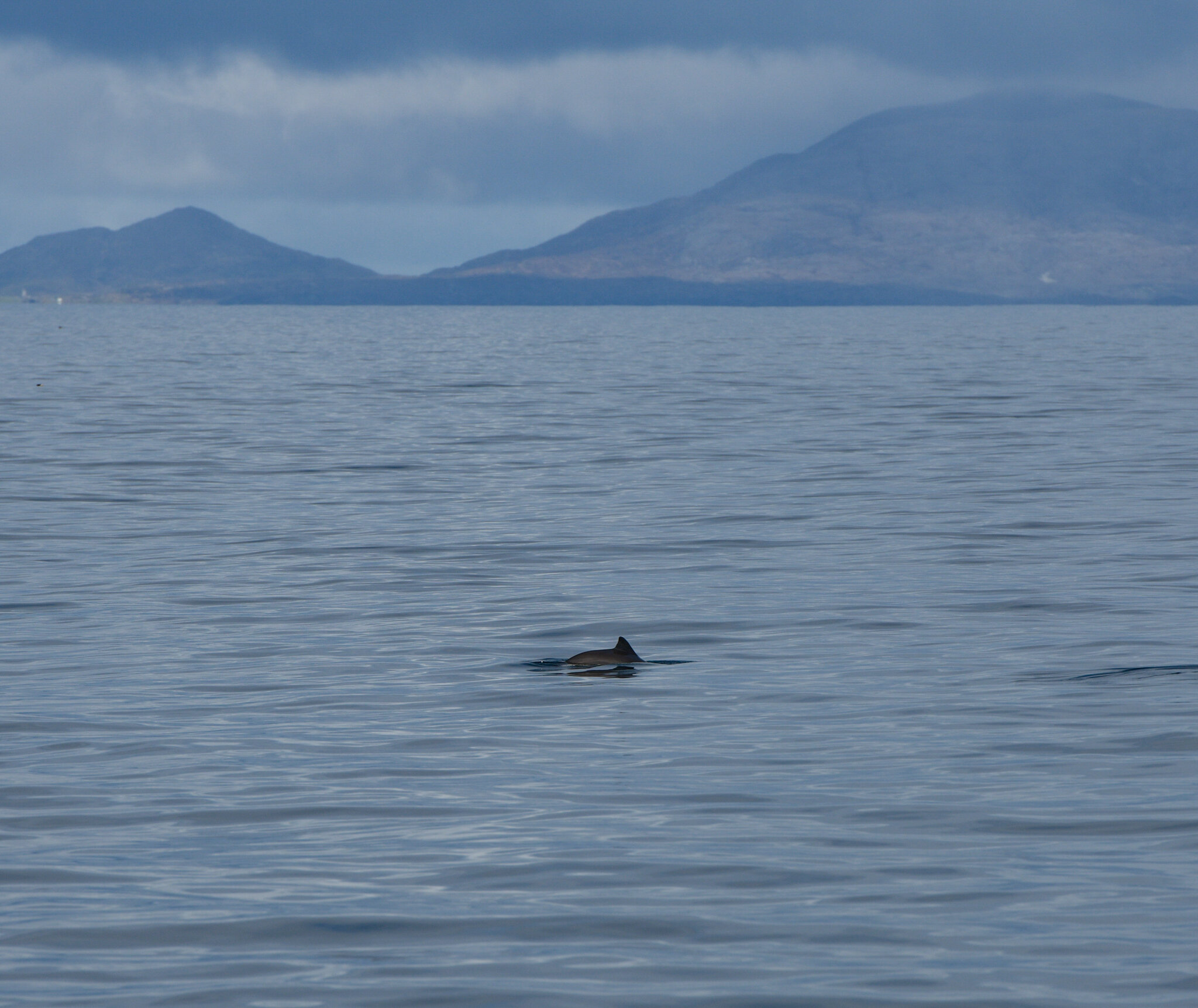Silurian monitors Joint Warrior, Europe’s largest military exercise
LAST MONTH SILURIAN SET OUT TO MONITOR JOINT WARRIOR, EUROPE’S LARGEST MILITARY EXERCISE, TO HELP US TO UNDERSTAND THE IMPACT it may HAVE ON CETACEANS IN THE HEBRIDES.
Joint Warrior is a UK-led tri-service multinational exercise that involves numerous warships, aircraft, marines, and troops. It is the largest military exercise in Europe, bringing together all three services (Royal Navy, Royal Air Force, and British Army), plus other nation’s forces.
Here at the Hebridean Whale and Dolphin Trust, we are concerned about how these exercises and training scenarios may be affecting the whales, dolphins, and porpoise in our waters. Sonar used during the exercises emits intense loud noise that can disturb and harm cetaceans, which rely on their sensitive hearing to navigate, find food and communicate. We are best placed to assess these impacts as the only organisation collecting long-term monitoring data in the Hebrides and we are committed to better understanding the impact these activities may have on cetaceans.
Because of the amazing generosity of our supporters in our recent Big Give Green Match Fund campaign, last month we were able to conduct a scientific survey from our research vessel to coincide with the exercise.
We departed from Tobermory on the 9th of May and immediately sailed north towards the Minch, where most of the military activity was taking place. For the next week, we concentrated on surveying these waters and monitoring military activity. The weather was challenging with a persistent swell and low visibility but we managed to cross the Minch several times, encountering dozens of different types of military vessels, and documenting several instances of sonar. We then made our way back down south to Tobermory via the Small Isles, with the weather changing for the better as we went.
In total, Silurian surveyed over 525 nm, despite the unsettled weather conditions, collecting over 80 hours of acoustic recordings.
Tracklines showing where Silurian travelled on our latest survey
During the survey, we recorded 36 instances of sonar. The hydrophone also picked up over 140 harbour porpoises, with over 930 individual clicks. Six species of marine mammals were visually recorded including harbour porpoises, common dolphins, minke whales, killer whales, and grey and common seals. No sightings were observed whilst sonar was being recorded, with only three cetacean encounters recorded in the Minch, where most of the military activity was observed.
One of the most exciting sightings of the trip was an encounter with Jon Coe and Aquarius, killer whales from the West Coast Community. As we left our anchorage at Lochboisdale in the Outer Hebrides we couldn't believe our eyes as the unmistakable fin of John Coe emerged from the water about 800 m away from the boat, glinting in the sunshine. After 10 minutes we also saw Aquarius in the distance and we followed them slowly south (through a rain shower!) before they stopped and appeared to be feeding under the waves. After over a week of surveying in a constant swell and unsettled conditions, we were just happy to see flat seas as we turned the corner. We could not have imagined a better Monday morning!
This encounter also marked a change in weather conditions as the winds began to ease and the showers disappeared. We were treated to calm seas and sunshine on the last few days of the expedition, with a rise in sightings, encountering numerous pods of common dolphins and even a group of lunge-feeding minke whales!



